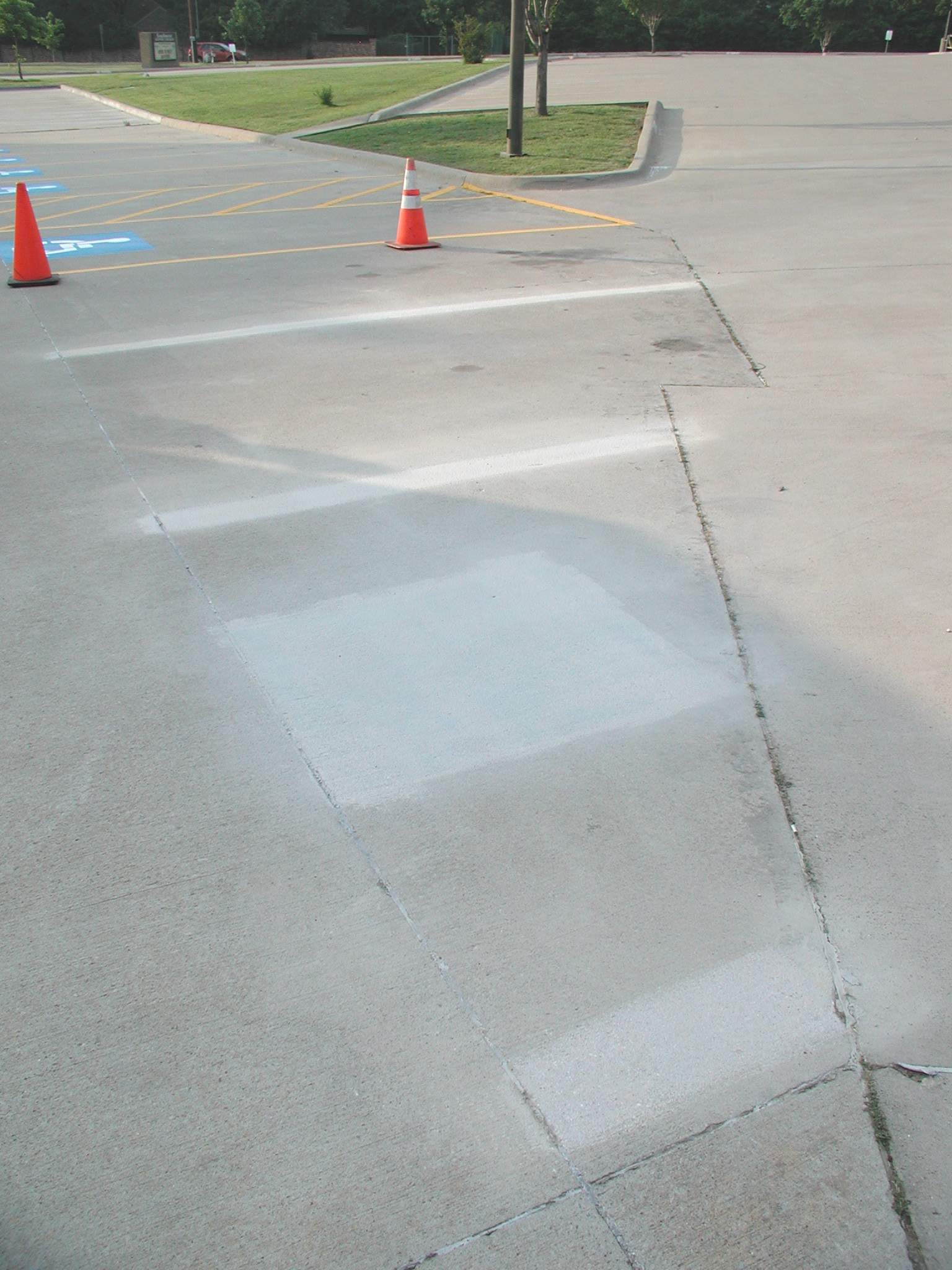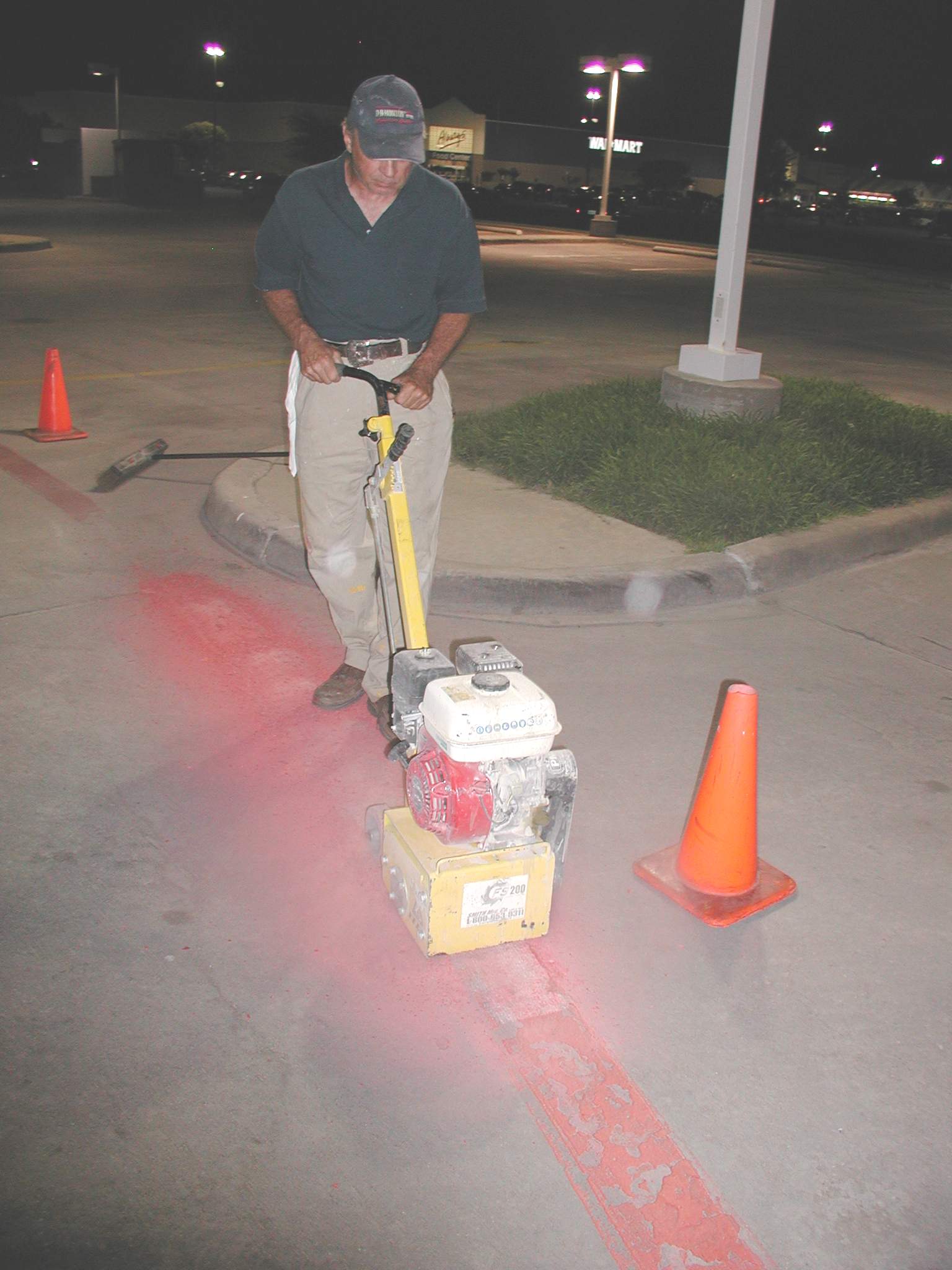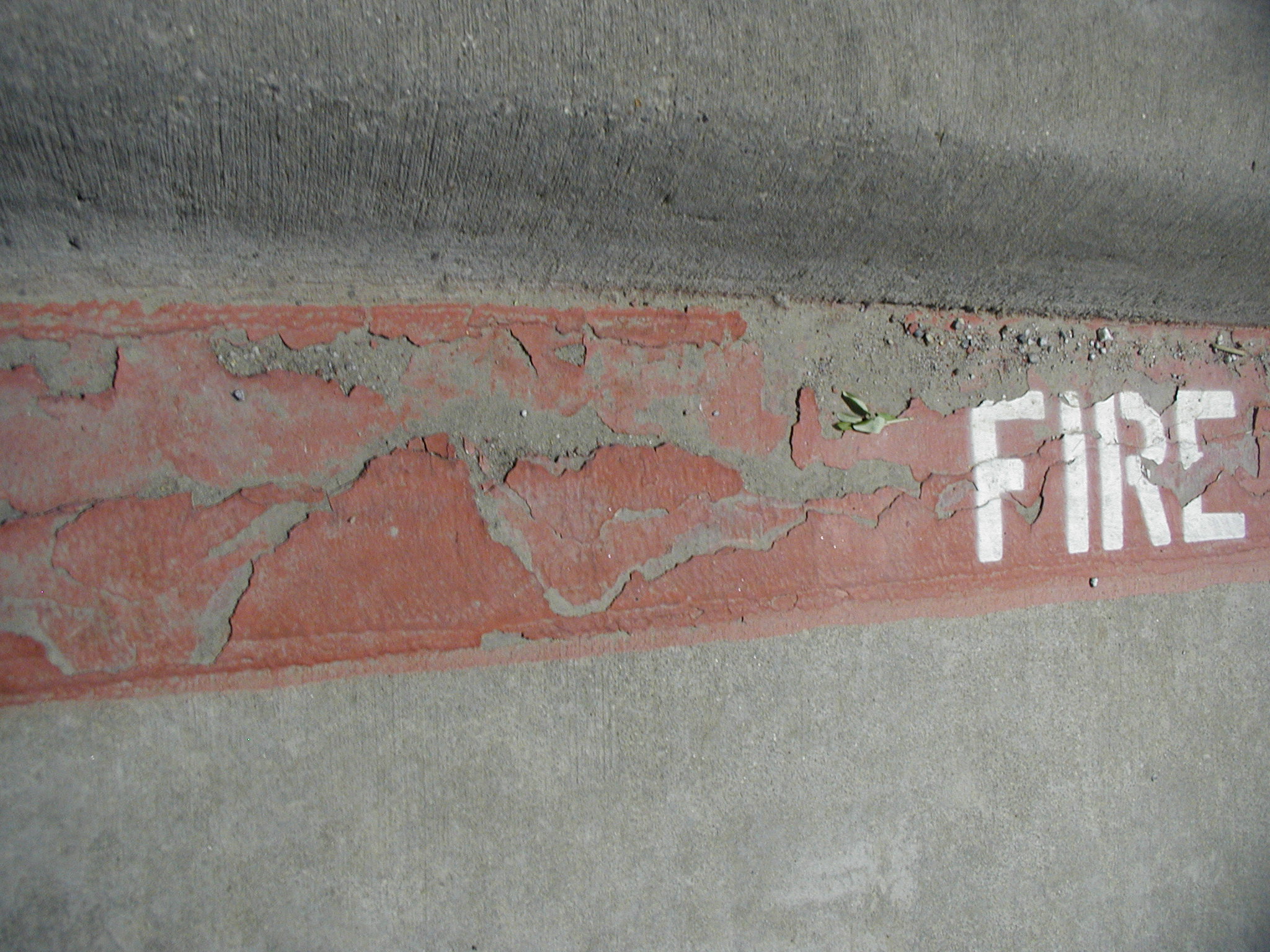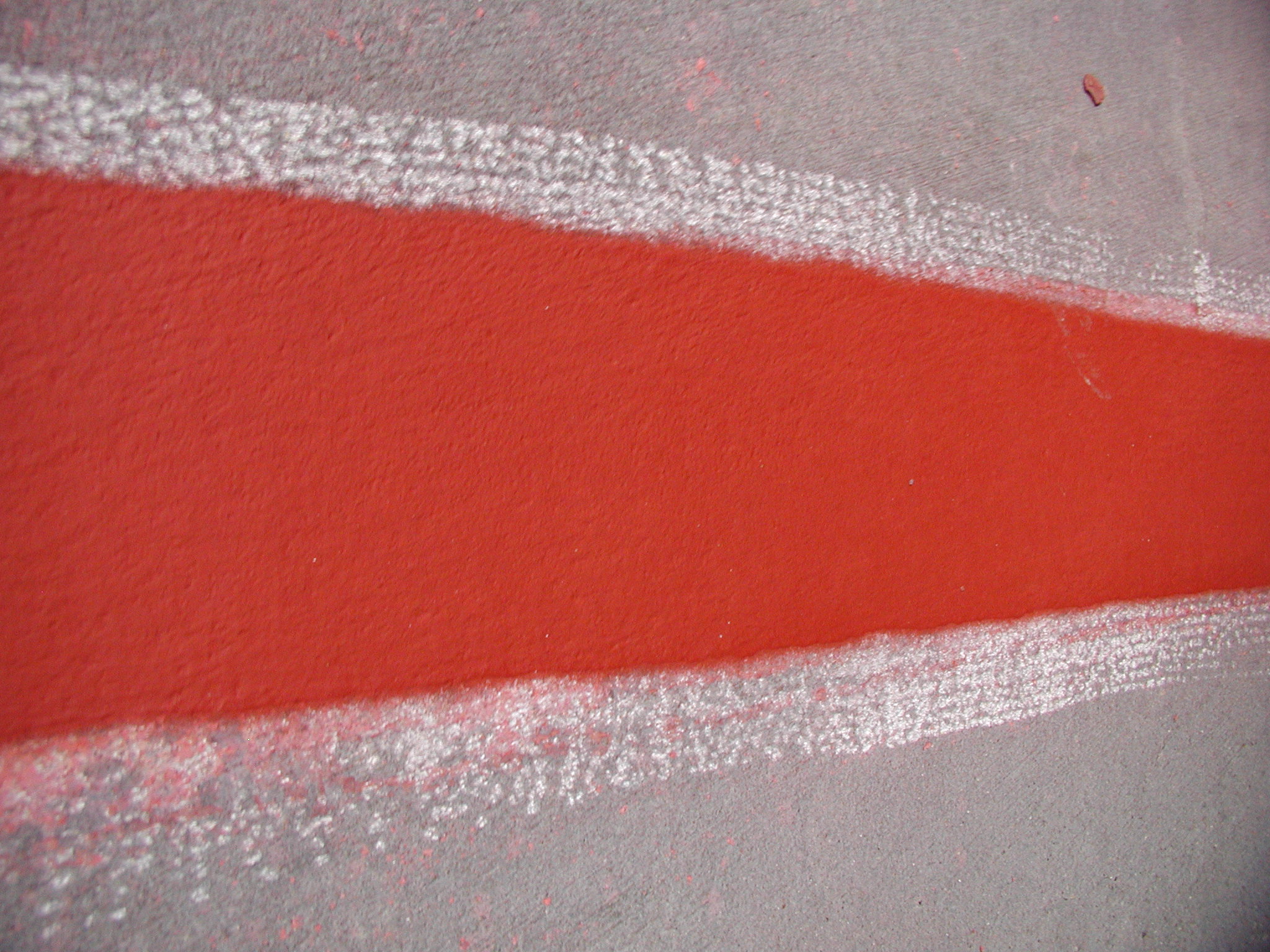|

In some cases, a scarifier/grinder can be used to remove old paint. Scarifiers employ various types of "cutters"
on a rotating drum, which knock paint loose from concrete with a slapping action. The harder carbide cutters
remove paint faster and last longer, but they tend to "scar" the surface a little more than a softer steel
cutter.
|

Removing
paint with a scarifier. We usually use this method as preparation for a restripe, when there is excessive build-up or flaking
paint. If a customer wants to completely remove markings, we usually follow with a pressure washer or wet sandblaster.
|
|

Moisture
is the biggest enemy of traffic paint. The worst areas are usually against curbs or in shaded areas.
|

As
you can see, the scarifier does tend to leave marks from the cutters. The dirtier the concrete the more visible they will
be. They can usually be minimized, with a good cleaning or with a little traffic on the area.
|